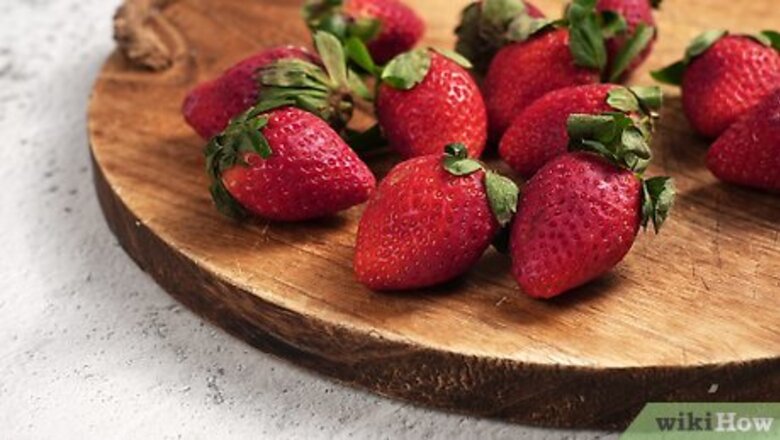
views
Method One: Western Tutti Frutti
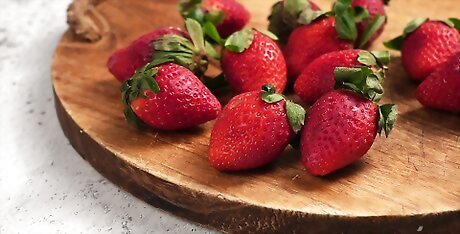
Select your fruit. For best results, choose a variety of fleshy summer fruit and use it while the fruit is in its ripest stage. Use a blend of multiple fruits instead of using only one type. Note that you do not need to add all of the fruit at the same time. You can gradually add different types to the mixture as the season progresses. Strawberries, raspberries, cherries, peaches, apricots, pineapple, nectarines, red currents, pears, seedless grapes, and plums are all popular choices. Avoid berries that are heavily seeded, like blackberries, and fruit that is too soft, like bananas. Acidic citrus fruits and watery fruits (cantaloupe, watermelon, etc.) are also poor choices. You may also want to avoid dark fruits, like blueberries, since they can discolor some of the lighter fruits in the mixture.
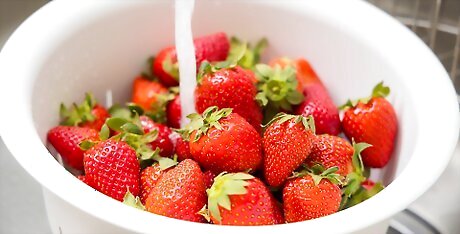
Wash the fruit. Thoroughly rinse the fruit under running water, using your hands to scrub away any visible dirt. Dry the fruit with clean paper towels. Even though the alcohol will kill most bacteria, clean fruit is more sanitary and safer to use than unwashed fruit.

Cut the fruit into pieces. Remove all pits, large seeds, and stems. Cut larger fruits into small pieces. Raspberries and other small fruits can usually be added to the mixture as they are. Large fruits will need to be cut into bite-size pieces or smaller. Medium fruits, like strawberries, may need to be cut into halves or quarters. It's also a good idea to measure the volume of fruit you have after you cut it. Measurements don't need to be exact, but you should have a fairly accurate estimate of the amount of fruit being used.

Place the fruit in a heavy pot. Transfer the prepared fruit to a heavy ceramic or glass container. Spread it out as evenly as possible. Consider using a crock, German rum pot, glass pickle jar, or ceramic cookie jar. Avoid using metal or plastic containers.

Add the sugar. Sprinkle an equal amount of sugar over the fruit in the pot. Toss gently to combine. The amount of sugar should always be equal to the amount of fruit. If you only have 2 cups (500 ml) of fruit at the start, you should only use 2 cups (500 ml) of sugar. Increase the volume of sugar only as you increase the volume of fruit.
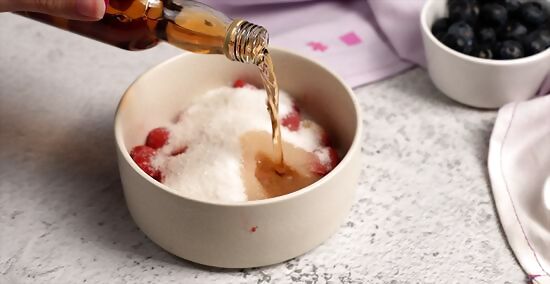
Cover with brandy. Pour enough brandy over the fruit mixture to cover it completely. You only need just enough brandy to cover the fruit. More brandy may need to be added later on if the volume of fruit increases or if some of the liquid evaporates.
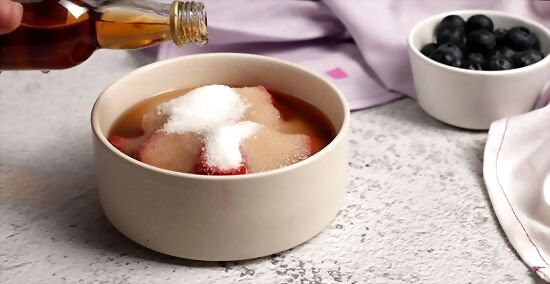
Add more throughout the summer. Ideally, tutti frutti should be started at the beginning of summer. Add more fruit as it comes into season throughout the rest of the summer months. Continue adding more fruit every few weeks until the end of summer or until the pot is full. When you add more fruit, you must also add more sugar. Make sure there is enough brandy to keep the fruit submerged, as well. Keep a lid on the pot of fruit as it sits out. If you don't have a lid, use a tight sheet of aluminum foil or plastic wrap. The pot of fruit should sit in a cool place and out of direct sunlight. Stir the fruit every few days to make sure that it stays submerged. Stirring also helps to dissolve the sugar.

Allow the mixture to soak for several months. Once all the fruit has been added, cover the pot and let it sit in a cool, shady area for at least three months. Traditionally, tutti frutti is allowed to sit until late November or early December. You can technically enjoy it earlier than that, but the flavors will not be fully developed.
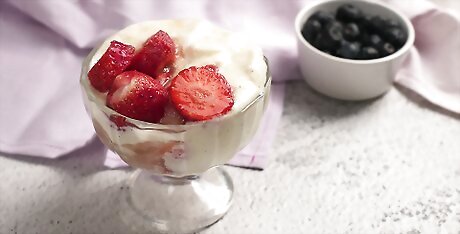
Use as desired. Once ready, tutti frutti can be enjoyed in numerous ways. It can be consumed on its own or used as a garnish for other desserts. You can serve the tutti frutti with its syrup over ice cream, cake, custard, or similar desserts. Alternatively, you can strain the liquid and enjoy the preserved fruit on its own or use it when making baked goods.
Method Two: Indian Tutti Frutti

Peel and chop the papaya. Peel off the skin of the papaya and dice it into 1/2 inch (1.25 cm) cubes. One medium green papaya will usually yield around 2 cups (500 ml) when diced. Peel the skin off the papaya, then cut off the stem end. Slice the papaya in half and use a spoon to dig out the seeds. Dig away the fleshy white skin beneath the seeds, as well. Use a sharp knife to cut both halves into slices, then cut each slice into small cubes.
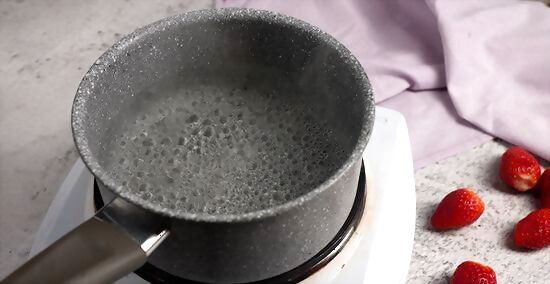
Bring 1 qt (1 L) of water to a boil. Pour 4 cups (1 L) of water into a 4-qt (4-L) or larger saucepan. Bring the water to a boil over medium-high heat.
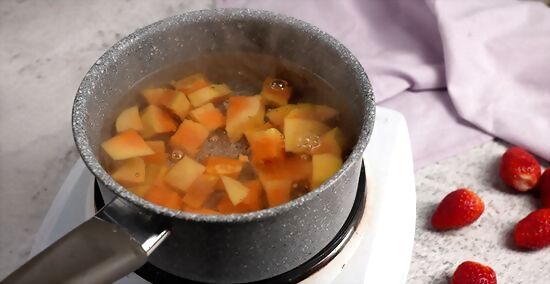
Simmer the chopped papaya. Once the water reaches a boil, add the chopped papaya. Turn the heat down to medium-low and allow the papaya to cook for 3 minutes. You only need to cook the papaya long enough to blanch it. It should not become tender or mushy during this time. Leave the saucepan uncovered while the papaya simmers.
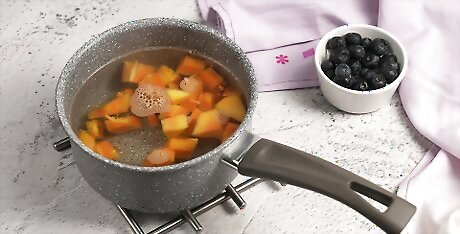
Let the papaya soak. Turn the heat off completely and remove the pan from the burner. Allow the papaya to sit in the hot water for another 5 minutes. Cover the saucepan as the papaya continues to soak. The papaya should become semi-transparent after it soaks. If it still looks opaque, continue soaking the papaya for another few minutes before proceeding.
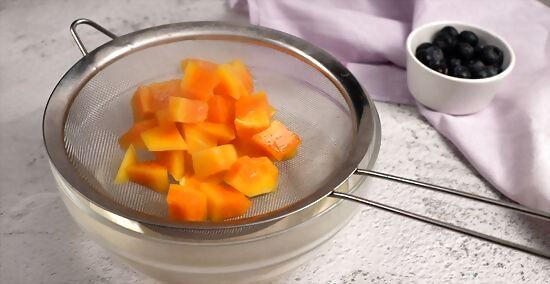
Strain the papaya. Pour the blanched papaya through a colander to drain the water. After draining the water, set the papaya aside until the time comes for you to add it to the syrup.
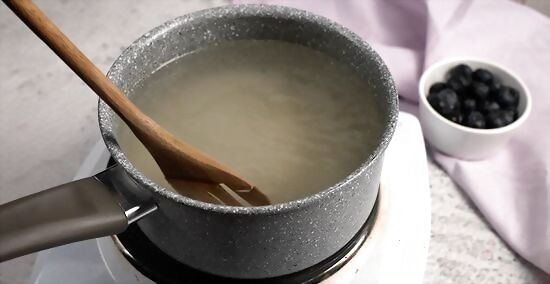
Combine the sugar and remaining water. Combine 2 cups (500 ml) of sugar with 3 to 4 cups (750 to 1000 ml) of water in a medium or large saucepan. For best results, use a saucepan with a minimum volume of 4 quarts (4 L). You can use the same saucepan initially used to blanch the papaya, but you should quickly rinse it out with running water before doing so.
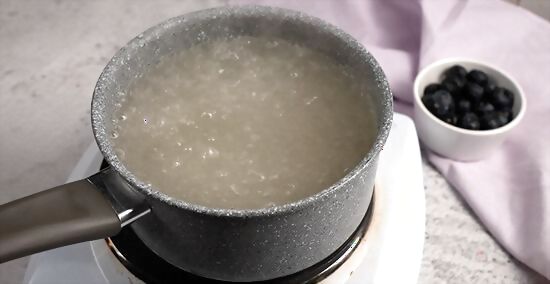
Boil until the sugar dissolves. Boil the sugar mixture over medium-high heat on your stove until the sugar appears to dissolve. You'll know when the sugar is dissolved based on the appearance of the mixture. If the mixture is still cloudy, the sugar hasn't dissolved yet. Once the mixture becomes clear, the sugar has been dissolved.
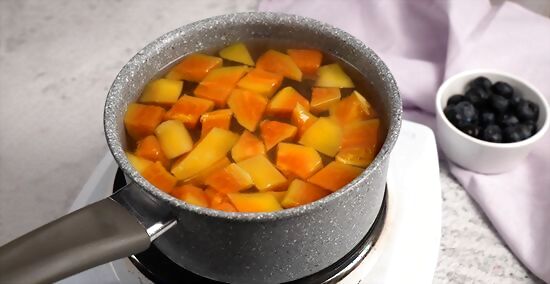
Combine the papaya and syrup. After the sugar dissolves, add the strained papaya cubes to the syrup. Mix well to combine.
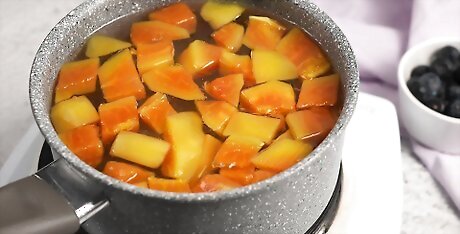
Cook 15 to 20 minutes. Reduce the heat the medium-low and allow the papaya to simmer in the syrup until the syrup thickens. The syrup must reach a "one thread" consistency. To test the consistency, remove a small spoonful of syrup and let it cool slightly for a few minutes. Pinch the syrup in between your thumb and index finger, then pull your fingers apart. A single thread of syrup should form between your two fingers and, if you pull your fingers apart gently, that thread should not break.
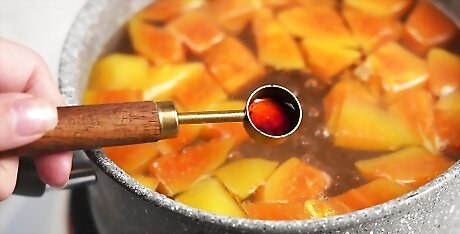
Add the vanilla extract. Turn off the heat and remove the saucepan from the stove. Add the vanilla extract to the contents of the pan and stir well to combine.

Divide the mixture into three portions. Ladle the papaya and syrup into three separate bowls, measuring the mixture out in relatively equal proportions. The measurements don't need to be exact, but they should be fairly even if you want to have an equal amount of each color. You also need to make sure that the papaya pieces in each bowl are covered with a fair amount of syrup. Glass bowls work best for this. Avoid plastic bowls since they may get stained by the food coloring.
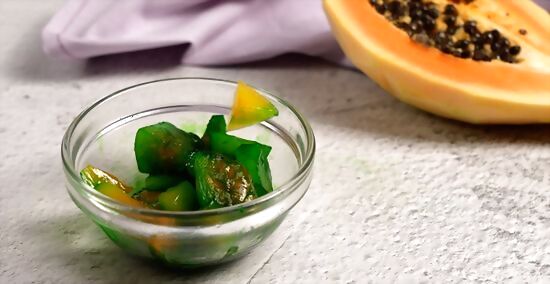
Add food coloring to each bowl. Add one to four drops of green food coloring to one bowl, one to four drops of yellow food coloring to the next, and one to four drops of red food coloring to the last bowl. Mix well to disperse the color evenly. It's better to start with a small amount of food coloring (one or two drops). Stir the food coloring into the syrup and papaya mixture. If the mixture seems too light, you can add a few more drops of food coloring at that time.

Soak the papaya for 12 to 24 hours. Cover all three bowls and allow them to sit out at room temperature for 12 to 24 hours. Choose a relatively cool location that is out of direct sunlight. If the bowls you use do not have lids, cover them with aluminum foil or plastic wrap. As the papaya cubes soak, the food coloring you just mixed in should dye the fruit, causing the cubes to take on a bright hue. The papaya should also absorb more of the syrup, becoming sweeter in the process.
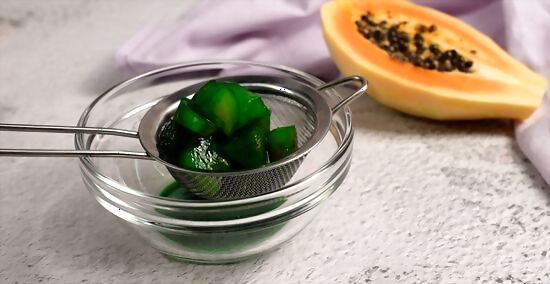
Strain the papaya. After the papaya has been allowed to soak, pour the papaya and syrup though a colander or strainer. Discard the syrup and reserve the papaya. Keep a plate or several layers of paper towel beneath the wire rack to prevent the syrup from staining your kitchen counter. Alternatively, you can spread the papaya out on plates covered with multiple layers of paper towel and allow them to dry that way.

Dry the fruit. Spread the papaya cubes over a wire net cooling rack. Allow them to dry for several hours, or until they no longer feel sticky to the touch.
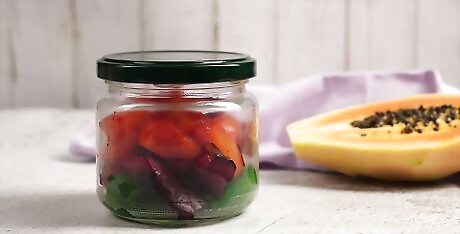
Store in an airtight container. Mix the different colors of tutti frutti together in an airtight jar. Seal the jar, then store and use when needed. At room temperature, the tutti frutti should be good for several days to one week. If you want to store the tutti frutti for a longer period, you should refrigerate it. When sealed and refrigerated properly, tutti frutti can remain edible for several months. Tutti frutti is often used in fruit cakes and Indian desserts like dil pasand. It can also be used in muffins, ice cream, cookies, breads, or other baked goods.
















Comments
0 comment